By David Burke
The BBC’s lavish Christine Keeler drama concealed her claim that the Director-General of MI5 was a Soviet mole and ignored what she knew about the infidelities of Prince Philip. The real story is one of treachery, depravity, judicial corruption and the sexual abuse of children by VIPs such as Lord Mountbatten.

The six-part BBC drama, ‘The Trial of Christine Keeler’, has just come to an end. It was meant to be an accurate and comprehenisve portrayal of the notorious Profumo Affair during which a teenager, Christine Keeler, slept with Captain Eugene Ivanov, a Russian naval attaché at the Soviet Embassy in London, while also having a relationship with the much older John Profumo, the high-flying Conservative MP who was Secretary of State for War.
Profumo, who met Keeler in July 1961, dramatically denied a relationship with her in the House of Commons but later admitted he had lied and, in June 1963, resigned in disgrace.

Stephen Ward, the artist and society osteopath who had introduced Keeler to Profumo, was subsequently put on trial for living off the immoral earnings of prostitutes. He took an overdose of medication before the jury returned a verdict against him and died shortly thereafter. He was found guilty on two charges.
1. THE WIMPOLE MEWS SPY RING.
The puzzle that lies at the heart of the BBC’s production is that it ignored the most significant claim Keeler made about the affair: that Sir Roger Hollis was a Soviet mole who was part of a network consisting of Stephen Ward and Sir Anthony Blunt. Hollis served as the Director-General of MI5, 1956 – 1965. Blunt was a KGB mole who penetrated MI5 during WW2. Keeler made the claim in her book, Secrets and Lies (2001).
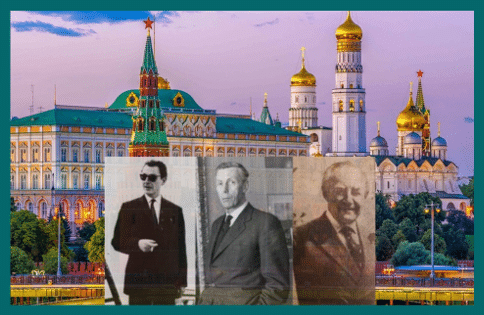
Keeler says she told Lord Denning about D-G Hollis in 1963 while the latter was carrying out his controversial inquiry into the affair and that he made notes of what she said. Hence, there is one straightforward way to resolve the question of D-G Hollis’ loyalty: declassify Denning’s files. Clearly, Keeler could not have known that D-G Hollis was a suspected Soviet mole until the 1980s when this allegation emerged into the public domain, except from her observation of him at Ward’s residence at Wimpole Mews where she had lived with Ward for a while. She said she was witness to a string of meetings between D-G Hollis and Ward at the address.
There is a way to resolve the question of D-G Hollis’ loyalty: declassify Denning’s files.
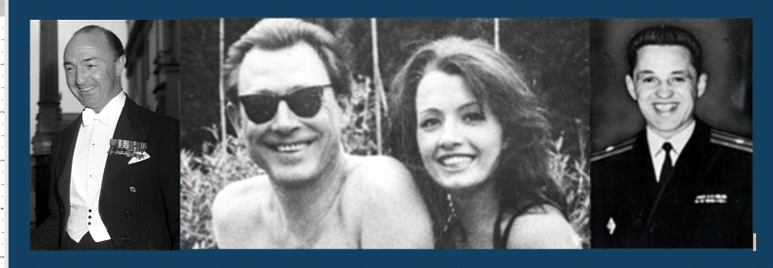
2. THE TRUE DEPTH OF THE KGB’S PENETRATION OF MI5 AND MI6 MAY BE UNFATHOMABLE.
Anthony Blunt joined MI5 at the start of WW2 and supplied the Soviets with classified and sensitive secrets throughout the conflict. The perceived wisdom is that he cut all links with Moscow after he retired from MI5 after the war ended and became the Surveyor of the King’s Pictures at Buckingham Palace. Keeler’s revelations, however, indicate that he was still an active Soviet agent as late as the early 1960s. Blunt eventually confessed his role as a Soviet agent and hence there is no doubt about his duplicity.
If D-G Hollis was yet another traitor, it means that he had over a decade to plant and promote fellow conspirators up the ranks and turn a blind eye to Soviet operations directed against Britain and her colonies. (MI5 is responsible for the security of UK and her colonies; MI6 spies on foreign soil.)

The British media has been obsessed with the hunt for the so-called ‘Fifth Man’ inside the Cambridge Spy Ring for decades. For many years D-G Hollis was viewed as a serious candidate for that perch. The Cambridge Ring consisted of Kim Philby, Guy Burgess, Blunt and Donald Maclean. British commentators now generally agree that a man called John Cairncross was the Fifth Man. Yet, there is no logical reason to believe there were only five high level traitors inside the Establishment or that Cambridge was the only campus visited by Soviet talent scouts.
If Keeler’s revelations about D-G Hollis are reliable, there is a strong possibility that MI5 was nothing less than a burgeoning nest of traitors. Indeed, D-G Hollis was only one of an array of suspects. A slew of books have been published which make out cases against a variety of suspects including the man D-G Hollis appointed as his deputy, Graham Mitchell. Another senior MI5 officer, Guy Liddell, was also put under the microscope as was Lord Victor Rothschild who served in MI5 during WW2.
There is no logical reason to believe there were only five high level traitors inside the Establishment or that Cambridge was the only campus visited by Soviet talent scouts.
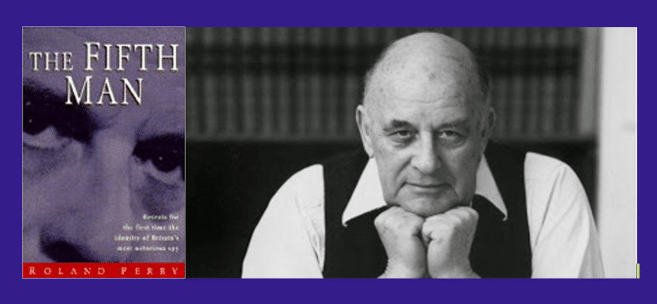
3. AND THEN THERE WERE THE BLACKMAIL TARGETS
Aside from ideologically motivated traitors, the KGB used blackmail to recruit reluctant informants. Incredible as it may seem, the FBI suspected Lord Mountbatten – who held a senior position in the Admiralty and had access to NATO secrets – was a traitor and monitored his private life. They learnt that he was a paedophile with a ‘lust for boys’.
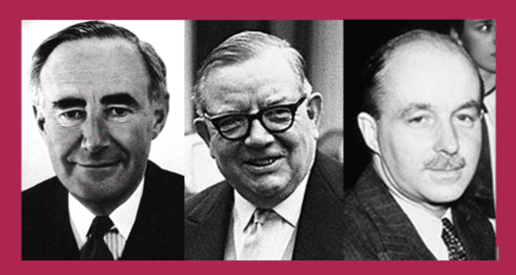
The Provisional IRA, who monitored and attempted to assassinate Sir Maurice Oldfield of MI6 in the mid-1970s, learnt he was a homosexual. If they knew, is it likely the KGB did not? In 2016 MI6 told the Hart Inquiry in Northern Ireland that Oldfield had a ‘relationship’ with the man who ran the notorious Kincora Boys’ Home in Belfast where sex abuse was rampant. If the Soviets knew even a fraction of this, why did they not destroy his career by exposing him? Instead, did they coerce him into spilling MI6 secrets? MI5 carried out an investigation into the possibility he had been blackmailed in 1980 and concluded he had not.

Was Oldfield’s reputed successor as Deputy Chief of MI6, Sir Peter Hayman, another of their blackmail targets? Hayman was a notorious paedophile with a conviction for gross indecency in a public lavatory. One of his victims was Richard Kerr, a former resident of Kincora who went to live in England after he left Belfast.
Put simply: there is every possibility that the Cambridge Ring merely opened the door for the Soviets to penetrate MI5 and MI6 and that it managed to infiltrate both organisations to a depth which may never be fathomed.

4. LIVING IN PERPETUAL DENIAL ABOUT THE SOVIET MOLES INSIDE THE BRITISH ESTABLISHMENT
Keeler says she made her allegations about D-G Hollis long before the doubts about the man became public knowledge. The speculation about him reached its high point during the uproar generated by the publication of Peter Wright’s multi million bestseller ‘Spycatcher’ (1987) which the Thatcher government tried so hard – and failed – to suppress. Overall, it emerged that D-G Hollis had been investigated for treachery on four separate occasions. Wright was one of the senior MI5 officers involved in these inquiries. Wright also knew a lot about Blunt’s treachery as he spent seven years debriefing him after he confessed his role as a mole.
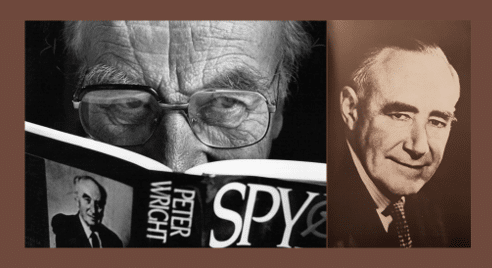
Astonishingly, the BBC made no mention of Keeler’s claim that D-G Hollis was a traitor who acted in league with Anthony Blunt in their drama. Blunt was not mentioned at all. In contrast, ‘The Crown’ featured Blunt quite prominently.
The BBC’s portrayal of Ward was that of an innocent victim of a vindictive Establishment determined to slice off a pound of his flesh as an act of retribution for the embarrassment he had occasioned to the Tories. Yet, Ward had made a public statement during which he had wholeheartedly supported Profumo’s denial of having had an affair with Keeler. He only changed tack when the Establishment began to destroy his life. They did this by harassing his clients who abandoned him in droves and thereby destroyed his livelihood. If the Establishment – on this occasion led by the Tories and the Home Office – secretly believed he was a treacherous Soviet agent, their campaign to vilify and destroy him makes perfect sense.
The concern about D-G Hollis’ loyalty abated after KGB sources told the British that Cairncross was the Fifth Man, as if there could only ever have been five high level traitors. This information emerged after the fall of the Iron Curtain at a time when it appeared that the once all powerful Soviet intelligence establishment had lost its sway over Russia. Apparently, there were pictures of all five British traitors on a wall deep inside the KGB HQ in Moscow.
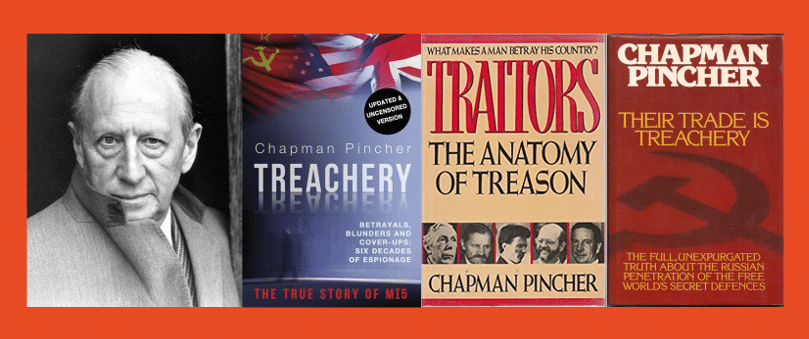
Is stretches credulity to breaking point to accept the KGB hung pictures of their prize assets on the wall of their HQ. This bizarre claim has all the appearance of being concocted by someone who did not – and could not have claimed to have had – access to the KGB’s Cambridge files but could have heard about the pictures. Why should these Soviet sources be believed? Perhaps they were paid handsomely for telling the British exactly what they wanted to hear. Perhaps it was a ruse. If the Soviets were misleading the British, and there were other moles, it means the Russians not only continued to hoodwink MI5 and MI6 but probably made a modest fortune in the process while all the time protecting the undetected moles they had planted in Britain.
5. LORD DENNING, MASTER OF THE RUSES
The Establishment’s fixer in the affair was a senior judge, Lord Denning, Master of the Rolls. If Keeler’s account is accurate, he betrayed his judicial oath and drew a veil of deceit around the truth.
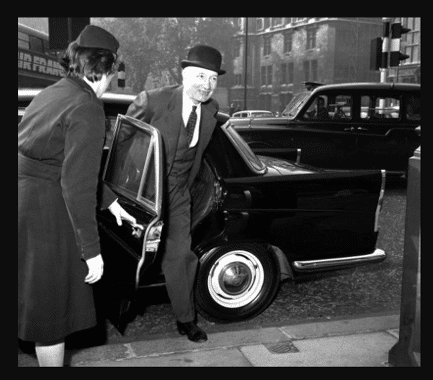
Denning produced a report in September 1963 which focused on the titivating and bizarre sexual shenanigans of the Establishment and was critical of Keeler’s reliability as a witness. Much of the political, security and intelligence material he amassed was suppressed. Denning, with an eye to his legacy, had expressed his wish that they be destroyed but they weren’t. He lied about their existence in the House of Lords in 1977 and was forced to apologise after PM James O’Callaghan called him out. Another prime minister, Sir John Major, knows what is in the archive for he perused it while in office. He decided against an early declassification. The files may be released in 2046.
Sir John Major knows what is in the archive for he perused it while in office. He decided against an early declassification.
In Secrets and Lies, Keeler drew back what she portrayed as Denning’s curtain of deceit. She revealed that Ward was a Soviet agent who procured young women – many mere teenagers – and made them available to his Establishment friends so as to ingratiate himself with them and secure opportunities to spy on them. He was also, she claimed, a sexual blackmailer.
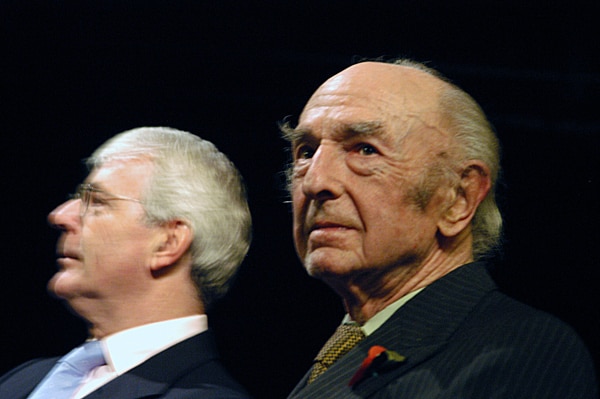
One of Ward’s victims, Mandy Rice-Davies, was only 16 when he lured her into his web of vice. She was still 16 when she fell into the clutches of the notorious slum landlord Peter Rachman. He exploited her sexually – just as Ward had. Rachman kept her attention by dazzling her with presents. For her 17th birthday, he bought her a jaguar car and a forged driver’s licence. Keeler had been 16 too when Ward first procured her as bait for the paedophiles he was targeting for the Soviets.
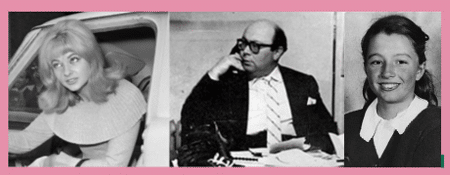
6. KEELER’S CASE AGAINST D-G HOLLIS AND BLUNT
In her book Keeler divulged how D-G Hollis was a visitor to Ward’s residence at Wimpole Mews where they discussed obtaining NATO secrets. She described how the mews ‘was where I first made coffee for Sir Roger Hollis, the Director-General of MI5, and Stephen’s fellow spy. For decades, academics and espionage buffs have tried to prove that Hollis was Moscow’s man, though all the official investigations have failed – or were intended to fail – to establish that. I witnessed it myself. I saw Hollis and Stephen Ward talking together at Wimpole Mews five times. I saw Hollis and Anthony Blunt there three times’.
She was dismissive of any notion that D-G Hollis might have been investigating Ward: ‘Of course not. When you spy on the spies you send James Bond. Not M, the chief Spymaster. Stephen [Ward] relied on Hollis to cover his tracks and at that time they were after important secrets. Espionage was on the front pages: George Blake [the MI6 traitor] had been charged under the Official Secrets Act but no details were given then. It was a spooky time in all meanings of the word. As far as Stephen and Hollis and Blunt and the others were concerned they were working on tilting the world’s balance.’ [Keeler pp. 73-74.]
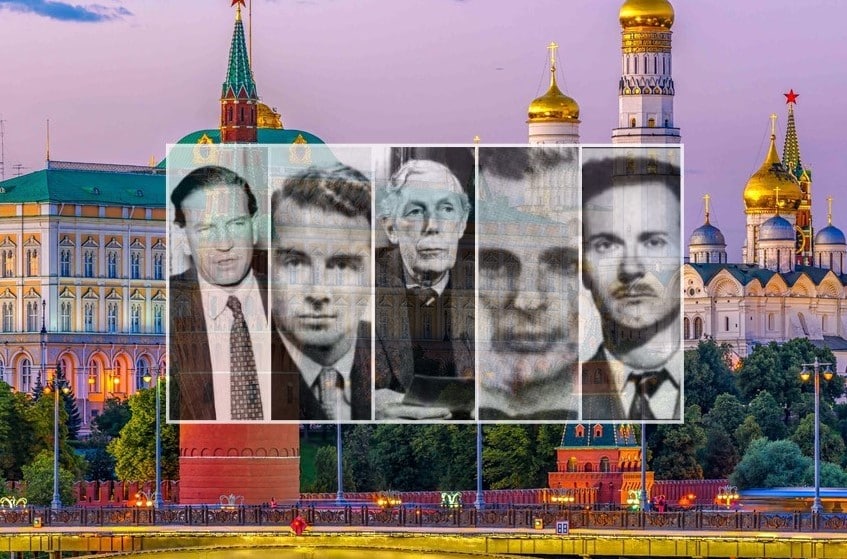
She says Denning showed her a photograph of D-G Hollis whom she recognised and that she was able to tell him about the visits. ‘After I had seen Denning, Hollis had to face three official inquiries into his running of M.I.5. He retired in 1965 but had to come back from retirement to face a fourth inquiry. He was cleared every time by other spies or those willing to protect the Establishment. Hollis, who died in 1972, should be in the same category as Burgess, Maclean, Philby and Blunt. And Stephen Ward’. [Pages 76-77.]
According to Keeler, ‘He was a cool man, Hollis. I never saw him flustered; I suppose he had that trained temperament to survive as a double agent. Stephen, on the other hand, did creak under the pressure and would lose it and start shouting at me for no reason, or screaming at some news item on the television or radio’. [p. 77]
D-G Hollis and Blunt maintained contact with Ward by masquerading as ‘patients’ who would ‘come round to Wimpole Mews straight from the consulting rooms. It was on those occasions that I made coffee for them. They were concerned about being connected to the Russian Embassy by [Oleg] Penkovsky [a Soviet intelligence defector to the USA] but could only sit the situation out. Because of the lack of information being passed between London and Washington, no one really knew who was working for whom’. [p. 77]
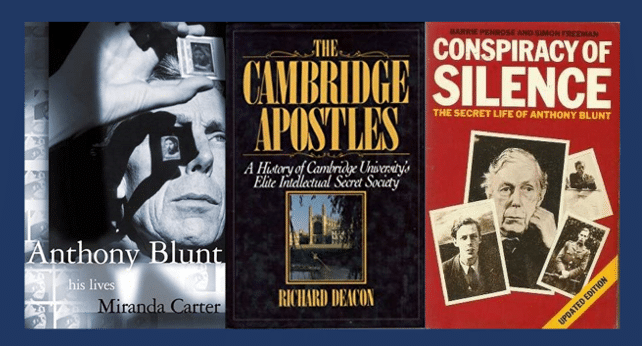
I witnessed it myself. I saw Hollis and Stephen Ward talking together at Wimpole Mews five times. I saw Hollis and Anthony Blunt there three times’.
Ward kept Blunt away from Captain Ivanov. ‘Stephen didn’t trust Eugene’s behaviour anywhere and he never allowed him to mix with Anthony Blunt. Those two were chalk and cheese, peasant and patrician, so Stephen made sure they were never there at the same time. The traitors would come during the day, hiding in plain sight. Eugene [Ivanov] would come in the evening and on ‘clear’ days. On the rare occasions when Eugene came to the flat, he normally had a cup of coffee while waiting for Stephen to get ready – Stephen was usually late.’ [ p. 79]
Keeler says that Captain Ivanov, the Soviet naval attaché, was an active member of Ward’s spy ring with the Englishman in the dominant role. There is no doubt Captain Ivanov was a spy working for Soviet military intelligence, the GRU. Ward’s object was to obtain information about NATO, especially the deployment of nuclear weapons in West Germany. There was no hint of this in the recent BBC drama.
7. SIR ANTHONY BLUNT, THE TRAITOR AND PAEDOPHILE WHO BLACKMAILED THE ESTABLISHMENT
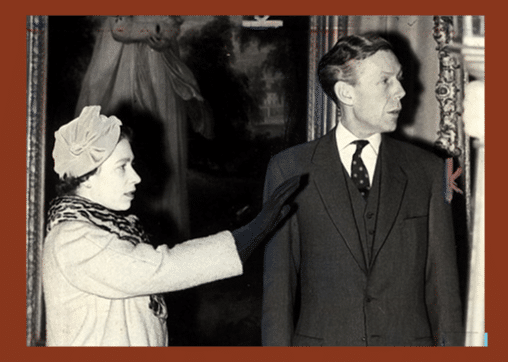
Blunt was detected as a Soviet agent in 1963, the Fourth Man in the Cambridge Spy Ring. Blunt finally acknowledged his treachery in April 1964. Incredibly, he was able to secure a sweetheart deal whereby he was granted immunity for all his crimes and retained his position at Buckingham Palace in return for allegedly helping MI5 unmask other traitors. Or was it so incredible if other factors are taken into account? It has always been suspected that Blunt was able to blackmail the Establishment, especially the Royal Family, to secure such favourable terms. Indeed, before Peter Wright commenced his interrogation of Blunt, he received a briefing from Michael Adeane, the Queen’s Private Secretary, who told him: ‘From time to time you may find Blunt referring to an assignment he undertook on behalf of the Palace – a visit to Germany at the end of the war. Please do not pursue this matter. Strictly speaking, it is not relevant to considerations of national security’. (Spycatcher p.223). However, Blunt undoubtedly passed details of this assignment to his KGB handlers. The odds are high that Blunt had been sent to Germany to recover the correspondence the Duke of Windsor had exchanged with the Nazi hierarchy after his abdication.
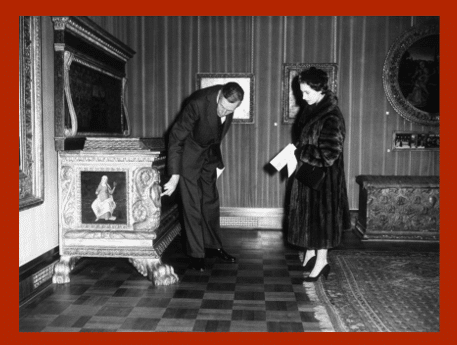
8. PRINCE PHILIP’S DIRTY SECRETS
If Keeler’s account is true, Blunt may also have had access to the compromat Ward had amassed about Establishment figures for the Soviets, not to mention what he already knew about the Royal Family.
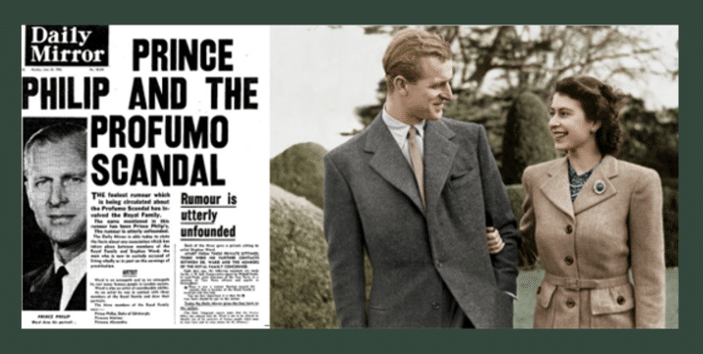
Keeler claimed that Prince Philip, the Duke of Edinburgh, was unfaithful to the Queen. ‘But I learned, first hand, from another of the Duke of Edinburgh’s lovers about another child. I was with her when she was pregnant.’ [See page 41.]
Ward also told her how he, Prince Philip and David, the Marquess of Milford Haven, a cousin of Prince Philip, ‘had all visited nightclubs together in the 1940s. They were quite wild times and it was all thought to be a little delicate for Prince Philip when Elizabeth became Queen, according to Stephen. He had no time for Philip and would always put him down in conversation for he hated the Establishment. He thought the House of Lords was full of idiots: “Through inheritance alone these people have been set up in the House of Lords to make judgements on our account, let me tell you.” He would get more and more heated and red in the face: “It’s like a thoroughbred animal; they marry their cousins and land up retarded and deformed with the interbreeding”. [p. 35.]

Ward was the son of a vicar who was married to an Irish woman from County Carlow. The Irish connection may account for some of his disdain for the British aristocracy.
123 of Ward’s portraits, including members of the Royal Family such as Prince Philip and the Queen’s sister, Princess Margaret, were purchased from an exhibition at the time of the scandal for £11,517, a fortune at the time. The purchase was made by a man who refused to give his name and paid by way of a bank draft. It has been alleged that Blunt made the purchase with Royal funds but this may not be accurate. However, it is inconceivable he did not know about the exhibition by his friend and fellow traitor, not to mention the potential embarrassment it posed to the Royals. Crucially, the money would have provided Ward with a financial lifeline after the destruction of his practice as an osteopath .
9. LORD MOUNTBATTEN’S PUTRID SECRETS
Village has described how Blunt was also part of the Anglo-Irish Vice Ring which abused children on both sides of the Irish Sea. He almost certainly told MI5 about an upper class Unionist paedophile ring which preyed on boys in care at Kincora Boys’ Home, Portora Royal College, Williamson House, Shore House, Burnside, Westwins and elsewhere. Lord Mountbatten was an active member of this ring and abused boys as young as eight. If anyone knew about Mountbatten’s predilections, it was Blunt.
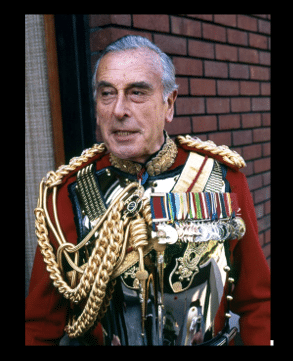
Ward even gathered gossip about his colleague Blunt and the latter’s lover, Peter Montgomery, the Deputy Lord Lieutenant of Tyrone. Montgomery procured boys for Mountbatten from Portora Royal College in Co. Fermanagh.
According to Keeler, ‘Great discretion was necessary over any homosexual goings-on for these were illegal, even between consenting adults, until 1967 and Stephen knew all about the Lords and prominent clergy who were “fruity”, as he said, with one another. Stephen often had dinner with Godfrey Winn, who was a Fleet Street star writer and a dreadful old puff and poseur. He was a user, not a friend. But Stephen made use of him from gossip from the homosexual world, about men like Anthony Blunt. Blunt’s long-time lover was Peter Montgomery, the brother of Hugh Montgomery who was the Very Reverend Monsignor Montgomery.’
Ward even gathered gossip about his colleague Blunt and the latter’s lover, Peter Montgomery, the Deputy Lord Lieutenant of Tyrone. Montgomery procured boys for Mountbatten from Portora Royal College in Co. Fermanagh.
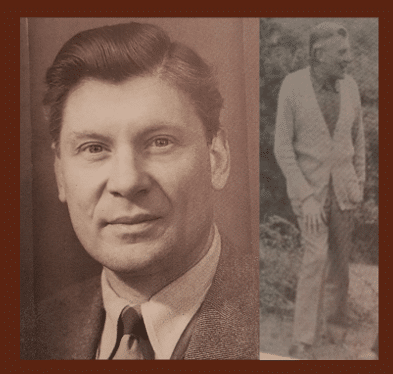
(Readers interested in further reading on these topics and individuals can click on the Anthony Blunt, Louis Mountbatten, Kincora, Peter Montgomery and Peter Wright tabs at the end of this article.)
The potential list of political, military, intelligence, royal and media blackmail targets provided by Ward, Blunt and others such as Burgess Maclean and Philby – and potentially also D-G Hollis and MI6’s Maurice Oldfield and Peter Hayman – must have been breathtaking. The operation hardly ended with the death of Ward. The Soviets would have moved heaven and earth to ensure that when their moles came to retire, replacements were put in place to maintain the flow of information. The people who became involved over the ensuing decades may very well be feeding Vladimir Putin’s intelligence services with Britain’s state secrets to this day.

10. DENNING’S SLEIGHT OF HAND
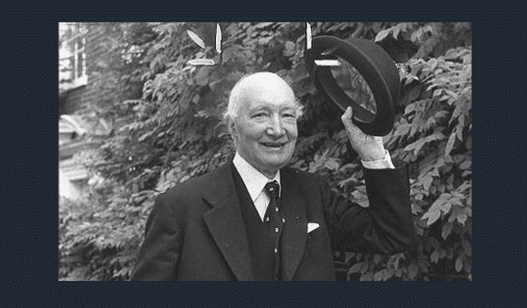
Keeler was questioned by the police as the scandal rumbled on. ‘In time, I told what I knew to the police and others: of Hollis and Blunt, of the intrigue, the sexual blackmail, the insidious movement in and around so-called high society of the underbelly of corruption and the greed and disdain for ordinary people. In time, all the press wanted me to talk about was a British government minister and a Moscow spy. And they were anxious, I can tell you, to know all about that. However, that was not the information the people in charge wanted to be circulated. They wanted it to be all about sex.’
It was against this background that the Denning inquiry was eventually set up. ‘I told Denning … I had been entrapped in Stephen’s spy ring and had witnessed his meetings with double agents and Soviet spies. I told him I had taken sensitive material to the Russian Embassy. He ignored my evidence that Stephen Ward was a Russian spy and that one of the top men in British intelligence was a Moscow man. I was a young girl when I met Stephen Ward and not much more than a teenager when I was interviewed by Lord Denning. Like Stephen, he seemed a father figure.’ [p. 209.]
According to Keeler, Denning already knew ‘that Stephen was a spy and that I knew too much. During my two sessions with him I told him all about Hollis and Blunt: how Stephen had politely introduced me and how I had said ‘hello’ and nodded when they visited. … He asked me very precisely who had met Eugene [Ivanov] and about the visitors to Wimpole Mews. He showed me a photograph of Hollis – it wasn’t a sharp shot of him – and asked me to identify him. I told Denning this was the man who had visited Stephen. … He did not show me a picture of Blunt for, I suspect, they already knew more than they wanted to know about Blunt. Denning was very gentle about it and I told him everything. This was the nice gentleman who was going to look after me. But I was ignored, side-lined – disparaged as a liar so that he could claim that there had been no security risk. It was the ultimate whitewash’. [p. 209]
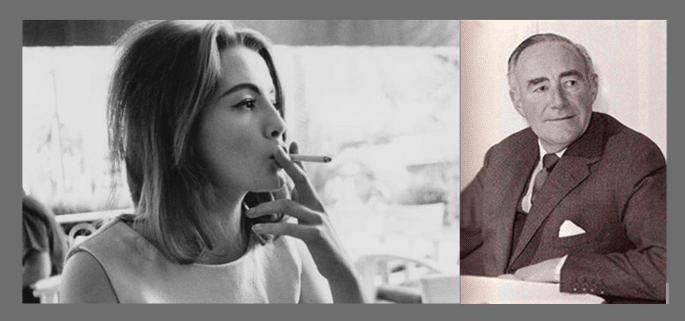
Her belief was that Denning was, ‘Fearful about what secrets Stephen had sent to Moscow Centre, [and he] used dates and places to cover up all that happened and denied all the evidence he had from me and others.’ [p. 209]
The combination of his whitewash report and salacious articles in the press ensured the public was indeed distracted by sensational stories about call girls, high-class orgies, a mysterious pervert in a mask who liked to be beaten, and hints about the sexual indiscretions of Prince Philip.
Denning may indeed have covered up the existence of the Soviet spy ring because Britain was fearful of suffering the humiliation of another espionage scandal in the wake of a string of such debacles and fearful of being cold shouldered by the CIA.
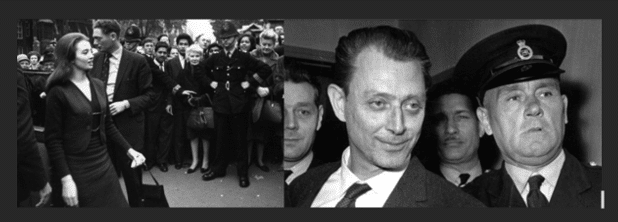
11. A MAN OF LITTLE CHARACTER: LORD DENNING WAS RACIST, ANTI-IRISH AND AN ANTI-SEMITE
The presence of Blunt in the sordid mix may have been a factor in Denning’s sleight of hand. Denning’s report was published in September 1963 after Blunt’s treachery had been established but before he appears to have concluded his immunity deal. He confessed his treachery in 1964 after protracted negotiations.
D-G Hollis was a supporter of the immunity deal.
If Denning had outlined the sweep of the allegations Keeler had relayed to him, it might have displaced the delicate noose the Establishment was pulling around Blunt’s neck. Independently, the revelations about D-G Hollis would have demolished the intelligence arrangement the British shared with the FBI and CIA in a flash.
That Denning was prepared to act as the fixer for the Establishment will come as no surprise to those who are familiar with the remarks he made about the Birmingham Six and Guildford Four.
He was an advocate of the death sentence and told one journalist that donning his black cap to pass a death sentence had never troubled him and that: “We shouldn’t have all these campaigns to get the Birmingham Six released. If they’d been hanged. They’d have been forgotten and the whole community would have been satisfied.”
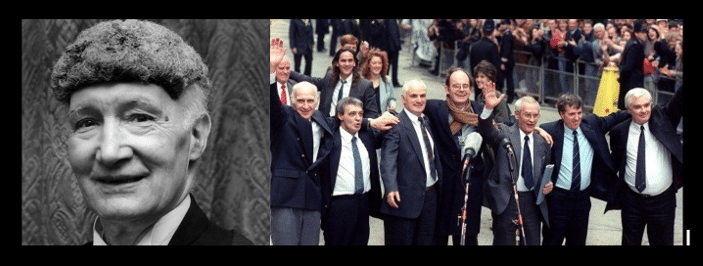
He alleged that the Guildford Four were “probably guilty”.
In 1980 he sided with the West Midlands police in a civil action taken by the Birmingham Six over injuries they had suffered while in police custody. He held that to rule that the detectives had been lying would open an ‘appalling vista’. Eleven years later he had to admit he was wrong.
“We shouldn’t have all these campaigns to get the Birmingham Six released. If they’d been hanged. They’d have been forgotten and the whole community would have been satisfied.”
Denning was also a racist. Referring to a trial that arose out of the Bristol race riots in 1982, he claimed the defendants had exploited their peremptory challenges to jurors to pack the jury with “as many coloured people as possible”. He was forced to resign after this. He was also an anti-Semite once referring to the European Commissioner and former Tory Cabinet minister Sir Leon Brittan, as a “German Jew”.
12. WARD’S PERPLEXING DEALINGS WITH MI5
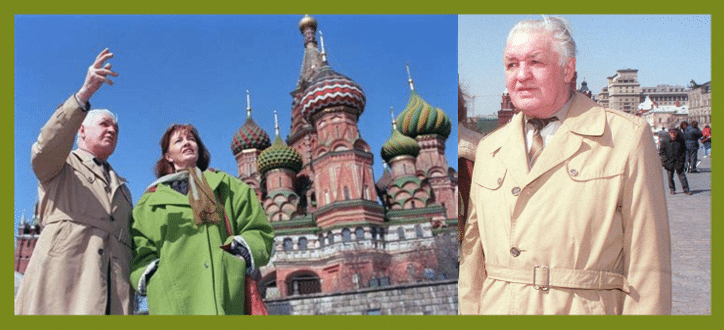
Ironically, Ward offered to spy on Captain Ivanov for MI5, presumably to shield himself from suspicion, perhaps with the connivance of D-G Hollis as part of an elaborate bluff. His offers were apparently spurned.
However, there are also accounts that he co-operated with them for a while in an attempt to lure Captain Ivanov into a honey trap but the scheme was abandoned.
A third version of events is that he acted as part of a back channel between London and Moscow with the knowledge of MI5.
In the final analysis, MI5’s true role in this part of the Profumo affair is still as clear as mud.
13. QUESTIONS OVER KEELER’S CREDIBILITY
It is important to note that Keeler pleaded guilty to charges of perjury against her, albeit she lied to protect two guests at her apartment who had defended her from an attack perpetrated by a vicious rapist called Lucky Gordon. The guests were afraid they would get into trouble with the police if they were found on a premises where there had been a fight. Regardless of these mitigating factors, the fact remains: Keeler committed perjury. On its own, her conviction raises serious questions about her credibility. In addition, there were many other instances where she lied about a range of serious matters. Nonetheless, it is a mystery why the BBC made a six-hour drama based on her story which utterly ignored her account of Ward and his Soviet spy ring, if only to let the audience consider it. Instead, the BBC focused on the injustice meted out to Ward who was prosecuted for living off the immoral earnings of Keeler and Mandy Rice-Davies.
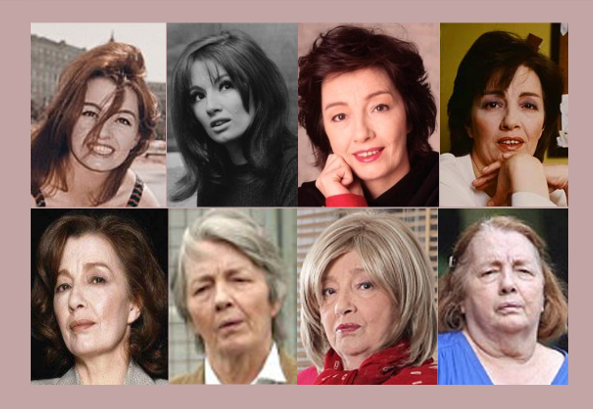
As suggested earlier, the first port of call in settling the mystery that surrounds the D-G Hollis dimension to the Profumo affair is to declassify Denning’s files. If they feature Keeler’s 1963 accusations against him, that alone would serve as a near complete vindication for her, most particularly if the archive also features the photograph of D-G Hollis which Keeler said Denning showed to her, the one that ‘wasn’t a sharp shot of him’. Surely ascertaining if the man charged with maintaining the security of the British Realm for over a decade was a loyal servant of the Crown or a traitor is sufficient reason to now declassify Denning’s records.
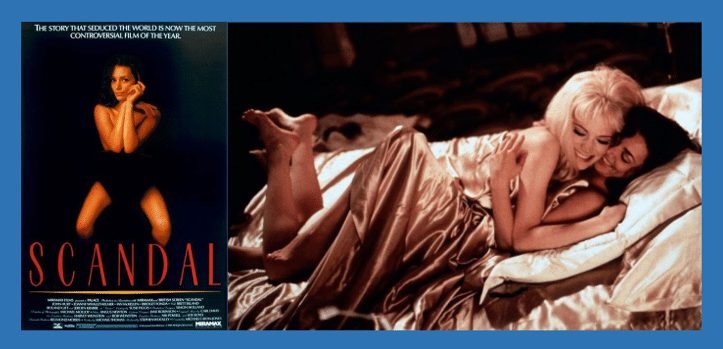
14. ACCIDENTAL SOVIET REGIME CHANGE IN THE UK
The British Labour Party – still in opposition – ate the Tories alive over the Profumo scandal. According to Keeler, the Establishment ‘wanted to brand Stephen as a perverted character who had lived off immoral earnings, a pimp. They needed Stephen as a scapegoat for their ineptitude and their guilt, a fall guy to divert attention from the government which was being hounded by Harold Wilson’s revived Labour Party. Wilson the dynamic new Labour Leader, could scent a political kill. The atmosphere was of bloodlust. As a principal in the hunt the hypocritical hounds were after me too.’ [p. 149-150.]
Ironically, if Ward was indeed a Soviet agent it means that the turmoil he unleashed destabilised Macmillan and Douglas-Home and ushered the Labour Party back into office after thirteen years in opposition at the next election. Wilson had visited the Soviet Union on a number of occasions and was not as gung-ho about NATO or deploying nuclear arms as the Tories had been. Moreover, he would refuse to send British troops to support the US Army in its fight against the communist insurrection in Vietnam.
Toppling the Tories was hardly planned by Moscow; clearly more happenstance than machination. Indeed, there has never been any indication that the KGB was behind any of the press stories that appeared in the international media at a time when the British press was refusing to break the Profumo story. Nonetheless, Moscow must have relished the demise of the Tories on account of the intrigues of their comrade in London, Stephen Ward. At the very least, it was compensation for the disruption occasioned to his UK spy network, Blunt’s exposure as traitor and the noose that was tightening around the neck of D-G Hollis. Captain Ivanov had been recalled to Russia before the scandal erupted.
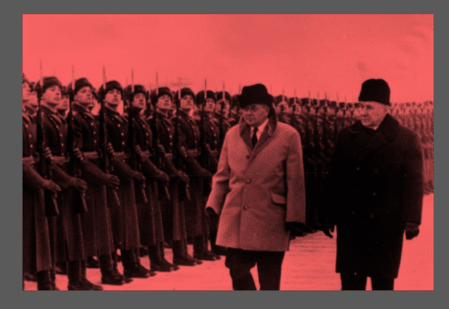
Ward’s treachery would also provide a rational explanation for the determined and malicious manner in which the Establishment set out to destroy him and thereby deny him access to people who might have had secrets to disclose. He became a social leper shunned by all and sundry after he was portrayed as a pimp who procured teenage girls for his debauched circle of friends. He ended up committing suicide at the tail end of his trial. Blunt was a beaten docket by this stage and in no position to help him while D-G Hollis – if indeed he was a traitor – was not able to save either of his comrades.
Keeler was punished severely too. She was charged with committing perjury. She pleaded guilty and received a nine-month sentence of which she served four and a half in prison.
15. A LEGACY OF CHILD ABUSE AND HORROR
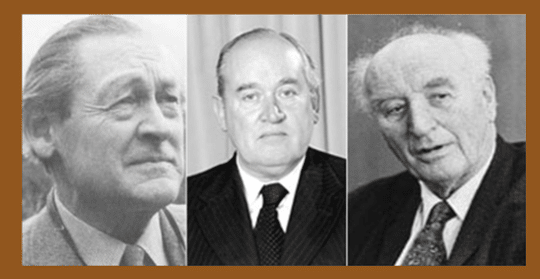
The most deeply nauseating aspects of this cesspit of intrigue was that Peter Wright almost certainly discovered the existence of the Anglo-Irish Vice Network from Blunt. Wright became obsessive about the minute details of the sex lives of those Blunt knew. Yet, instead of putting a halt to the child abuse revelations, MI5 exploited the information for operational purposes. This began under D-G Martin Furnival Jones and his successor, D-G Michael Hanley.
‘I spent a lot of time in Ireland’, he intoned, ‘and it was not pleasant. We also did a lot of things there which I am never going to talk about, because it would just cause more trouble.’
In 1991 Wright published a second book, little more than an A-Z of espionage terminology with a few stories thrown in for good measure. It was entitled the Spycatcher’s Encyclopedia of Espionage. There was, however, a hint in it at the Irish secrets he intended to carry to his grave. ‘I spent a lot of time in Ireland’, he intoned, ‘and it was not pleasant. We also did a lot of things there which I am never going to talk about, because it would just cause more trouble.’ (114).

Wright’s earlier book, Spycatcher had cast MI5 and MI6 in a deplorable light: little more than organisations riddled with traitors and immersed in criminality. Throughout the trial to halt its publication, HMG was put on an anvil and hammered mercilessly by Wright’s dogged lawyer, Malcolm Turnbull, who later became the PM of Australia. When Turnbull published his own account of the affair, The Spycatcher Trial, he recounted how he had asked Wright at their first meeting if he thought HMG feared he might reveal other secrets. ‘They might’, Wright replied adding mysteriously, ‘I spent a lot of time in Northern Ireland, you know. But I won’t reveal anything about that. Malcolm, it would be easy for me to make this book very sensational indeed.’
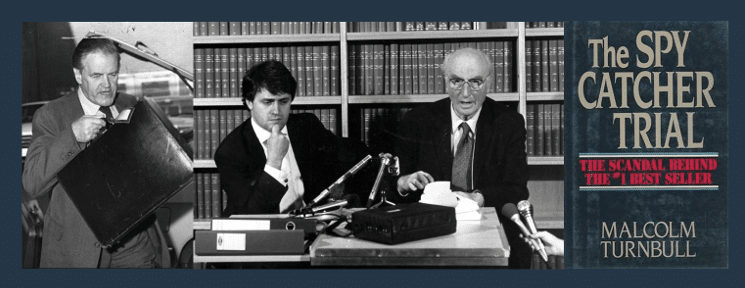
Wright had also cautioned Turnbull that: ‘I may never be able to tell you the truth about some things.’ When Turnbull asked him what he meant, Wright responded: ‘My work in Northern Ireland, for example. .. This is a safe book compared to what I could write.’
‘I may never be able to tell you the truth about some things.’ When Turnbull asked him what he meant, Wright responded: ‘My work in Northern Ireland, for example. .. This is a safe book compared to what I could write.’
Did he have Kincora, Williamson House and the other woeful care homes ensnared by the Anglo-Irish Vice Ring in mind? They were places where MI5 let Unionist politicians like James Molyneaux MP and paramilitaries like John McKeague gain access to boys so they could be blackmailed. Wright went to his grave without revealing the sordid secrets he knew about Northern Ireland.
Ward died in 1963: Hollis in 1973; Blunt in 1983; Ivanov in 1994; Wright in 1995, Denning in 1999; Profumo in 2006; Rice-Davies in 2014; Keeler in 2017.
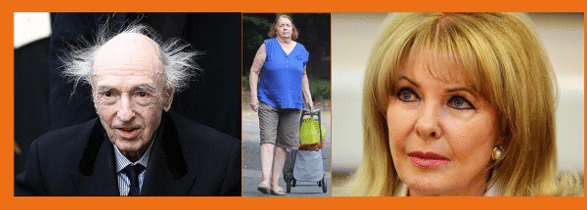
OTHER STORIES PUBLISHED BY VILLAGE MAGAZINE.
With regard to Lord Mountbatten see: SECOND UPDATE: Kincora boy abused by Mountbatten committed suicide months later
With regard to Prince Andrew: The Prince, the pauper and the paedophile peer: the dangerous questions the BBC failed to ask.
With regard to Roy Cohn who was Donald Trump’s mentor: Trump’s mentor: another sociopathic paedophile child-trafficker in the mix; from Roy Cohn to Epstein and Maxwell.
Village’s online book on the Anglo-Irish Vice Ring begins here: The Anglo-Irish Vice Ring. Chapters 1 – 3.
The plot to discredit victims of VIP sex abuse: Carl Beech and the ‘Useful idiots’ at the BBC. The incompetence of the BBC has now made it a pawn in the cover-up of VIP sex abuse. The darkest forces in MI5 and MI6 are the true beneficiaries of its inepitude.
With regard to Enoch Powell: Suffer little children.
With regard to former British prime minister Ted Heath: Not just Ted Heath: British Establishment paedophilia and its links to Ireland